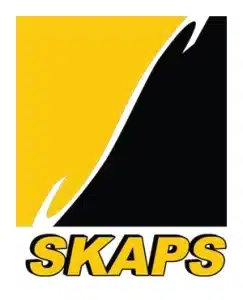Heap Leaching is an industrial mining process wherein large piles of mineralized ore are irrigated with various chemicals including alkaline, acidic, or cyanide solutions which leach the intended mineral out of the rock and into the solution. The mineral-bearing solution trickles down through the rock pile and eventually gathers on an underlying, impermeable liner. The solution is then pumped or gravity fed off the liner either into storage or for chemical processing wherein the mineral is removed from the solution, which is then reprocessed back into the leaching system.
As the solutions used tend to be poisonous or environmental toxins, strict fluid management makes both economic and environmental sense. The better engineered the pad lining and fluid recovery system the higher the mineral recovery and in turn environmental protection.
Generally, leach pads are conventional, dumps, valley fills, and dynamic on/off pads.
- Conventional pads are comparatively flat and the ore is stacked in thin layers (up to 15 meters).
- Dumps are similar to conventional pads but the ore is generally uncrushed and very low grade.
- Valley fills are built in natural valleys with buttress dams at the bottom of a valley or a leveling fill within the valley.
- Dynamic pads are graded to near flat plane since off-loading requires accurate information of the liner system relative to the depth
The overburden stress on the liner system is the depth of the ore times the density of the ore.
Geomembrane Liner System
SKAPS geomembranes are ideally suited for mining applications since typically these are large-footprint projects and SKAPS can offer the widest textured sheet product available in North America. With its state of art blown film technology SKAPS can customize the liner thickness and texturing asperities for superior frictional performance for valley fill and canyon fill applications. SKAPS HDPE and LLDPE geomembranes offer a highly impermeable liner system to minimize the loss of precious pregnant solution and lower potential environmental impacts.
SKAPS Geomembranes for Mining Applications
Geocomposite Drainage System
Crushed stones with specific requirements are expensive and not easily available to deliver at job site. It is not advantageous to place crushed stone directly against geomembrane. An alternative is necessary which is cost-effective and reduces construction time with ease of availability. SKAPS geocomposite, that is TRANSNET geonet bonded to one side or both sides with a non-woven needle-punched geotextile. TRANSNET geonet made with high-density polyethylene does not crush under the high normal pressure of ore in heap leach pads. The geotextile acts as a filer media and helps smooth, uninterrupted flow. The installation is faster than laying crushed stone and damage to geomembrane is minimum compared to the crushed stone layer.
Geotextiles in Mining Application
In Heap leaching operation mined ore is usually crushed into small chunks and heaped on a geomembrane and/or clay-lined leach pad, where it can be irrigated with a leach solution to dissolve the valuable metals. The crushed ore containing gold is irrigated with a dilute alkaline cyanide solution. Sulfuric acid is used to dissolve copper, nickel and uranium from its ores. So aggressive liquids are used in this process and the geosynthetic materials used in this application have to be chemically resistant across a wide ph range.
SKAPS geomembrane liner beneath heap leach stacks provides a primary containment barrier for leach solutions with proper liner selection and installation. Underlying the geomembrane there is a fine-grained bedding fill to protect the overlying geomembrane liner from subgrade rock puncture. This layer is not readily available and SKAPS non-woven geotextiles offer a great economical, factory-manufactured solution to the problem. SKAPS non-woven geotextiles can be used directly underneath the geomembrane for cushion purposes.
The pregnant solution is collected and transported out of the heap mine using a network of collection pipes. The solution collection pipes survivability and long-term flow capacity is often engineering design problem. SKAPS non-woven geotextiles can be incorporated in the design for filtration function and offer a superior solution in comparison to just having gravel in a collection sump or a collection trench.
Cost Comparison
The crushed stone layer costs are about one-third of the total cost of the liner system and crushed stone costs have been escalating at a significantly higher rate than other construction costs. The gravel is also a problem with cost overruns and project delays. The SKAPS Geocomposite can be used instead of the gravel layer partially or completely at a lower cost. It also provides cushion and protects the geomembrane from damage and helps to minimize punctures of the geomembrane.
Performance
The SKAPS geocomposite can withstand higher compressive loads, which makes it appropriate to use as a drainage and protection layer under higher loads of large heap leach pads. The SKAPS geocomposite provides better in-plane flow capacity to transport leaching solutions under very high overburden loads.
